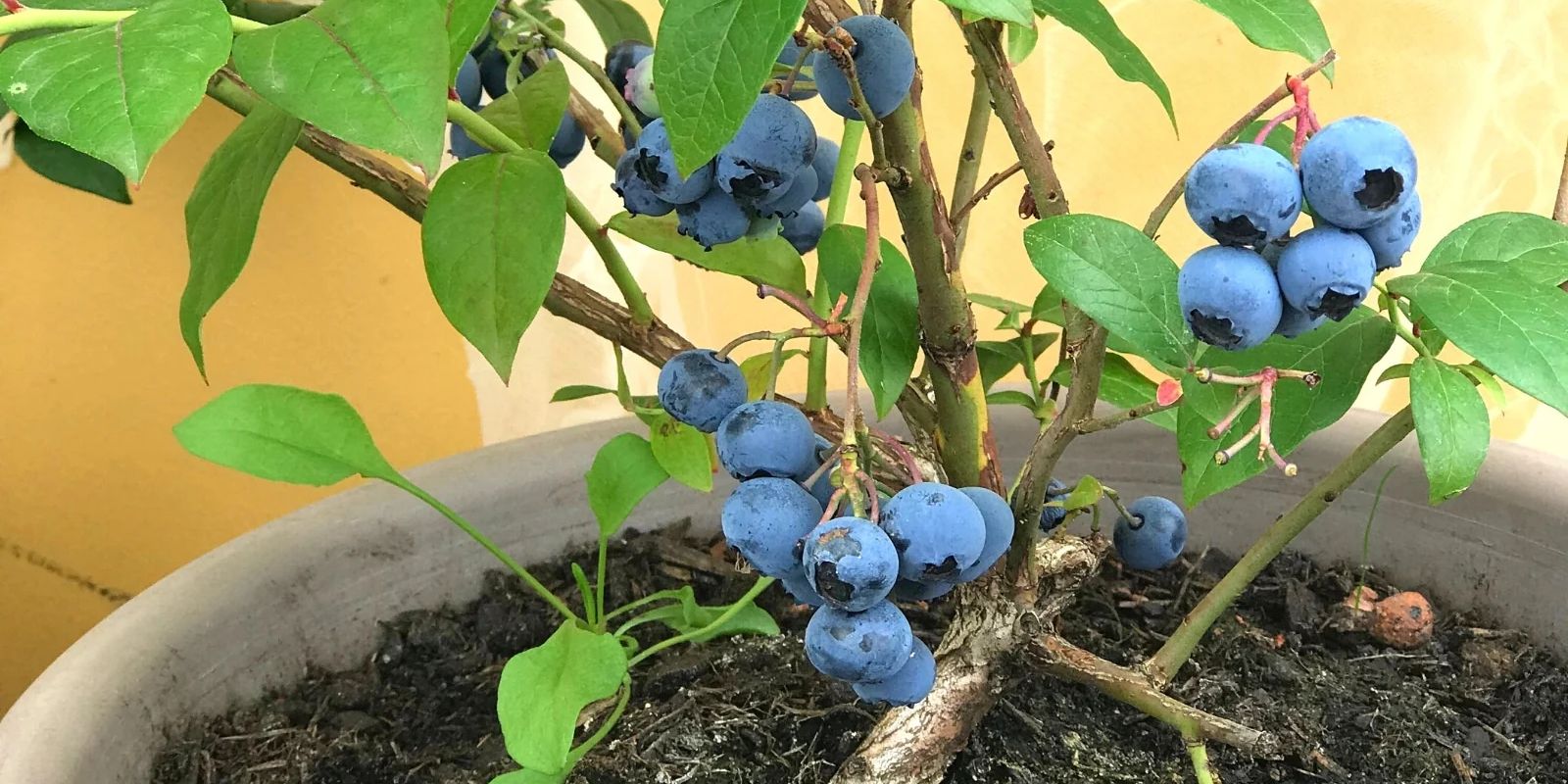Growing blueberries in pots is an excellent way to enjoy this nutritious fruit even if you have limited garden space or live in an urban environment. Container gardening for blueberries not only offers flexibility but also allows you to control the growing conditions more precisely, leading to healthier plants and a bountiful harvest. In this comprehensive guide, we will explore the essential steps for successfully growing blueberries in pots, ensuring you can enjoy fresh, homegrown berries right at your fingertips.
1. Selecting the Right Pot
Choosing a Suitable Container:
The first step in growing blueberries in pots is selecting the right container. Opt for a pot that is at least 18-24 inches in diameter and has good drainage holes. Blueberries have shallow, spreading root systems that require ample space to thrive. A pot of this size will provide enough room for the roots to grow and spread out.
Material Considerations:
Choose pots made from durable materials such as plastic, ceramic, or terra cotta. Plastic pots are lightweight and retain moisture well, while ceramic and terra cotta pots offer better insulation for the roots. Ensure that the pot has adequate drainage to prevent waterlogging, which can lead to root rot.
2. Preparing the Potting Mix
Acidic Soil Requirements:
Blueberries require acidic soil with a pH between 4.5 and 5.5. Standard garden soil is usually too alkaline for blueberries, so it’s essential to use a potting mix designed for acid-loving plants.
Mix Ingredients:
Create a suitable potting mix by combining equal parts of peat moss, pine bark, and perlite. This mixture provides the acidity blueberries need and ensures good drainage. You can also purchase pre-made acidic potting mixes from garden centers.
Soil Preparation Steps:
- Mix Thoroughly: Combine the peat moss, pine bark, and perlite in a large container or wheelbarrow.
- Moisten the Mix: Lightly water the mix before adding it to the pot to ensure it is evenly moist but not soggy.
3. Planting Blueberry Bushes
Choosing the Right Varieties:
Select blueberry varieties that are suitable for container growth. Varieties such as ‘Top Hat,’ ‘Patriot,’ and ‘Bounty’ are compact and well-suited for pots. Ensure the variety you choose is compatible with your climate and local conditions.
Planting Procedure:
- Prepare the Bush: Gently remove the blueberry bush from its nursery pot. If the roots are tightly bound, loosen them slightly to encourage new growth.
- Planting Depth: Place the bush in the pot at the same depth it was growing in the nursery pot. The top of the root ball should be level with the top of the potting mix.
- Backfill and Water: Fill around the root ball with the prepared potting mix, pressing gently to remove air pockets. Water thoroughly to help settle the soil.
4. Caring for Your Blueberry Plants
Watering:
Blueberries have shallow roots and require consistent moisture. Water your blueberry plants regularly, ensuring the soil remains evenly moist but not waterlogged. Check the soil moisture frequently, especially during hot or dry periods.
Fertilizing:
- Type of Fertilizer: Use a fertilizer formulated for acid-loving plants, such as those containing ammonium sulfate or a mix specifically for blueberries.
- Application Timing: Apply fertilizer in early spring as new growth begins and again in mid-summer. Follow the manufacturer’s instructions for application rates to avoid over-fertilization.
Pruning:
Regular pruning helps maintain the health and productivity of blueberry plants. Remove dead or damaged branches and any weak or spindly growth. Prune the bush in late winter or early spring before new growth begins to shape the plant and encourage stronger, more productive branches.
5. Providing Adequate Light
Sunlight Requirements:
Blueberries need at least 6-8 hours of direct sunlight per day to thrive and produce fruit. Place your pot in a sunny location, such as a south-facing patio or balcony, where it will receive ample sunlight throughout the day.
Managing Light Exposure:
If your space has limited sunlight, consider using grow lights to supplement natural light. Place the lights above the plants and set them on a timer to provide consistent light exposure.
6. Protecting Your Plants
Winter Care:
In colder climates, protect your blueberry plants from freezing temperatures. Move the pot to a sheltered location, such as a garage or a covered porch. Alternatively, insulate the pot with burlap, mulch, or other protective materials to prevent the soil from freezing.
Pest and Disease Control:
Keep an eye out for common pests such as aphids, spider mites, and scale insects. Regularly inspect your plants and treat any infestations with appropriate organic or chemical controls. Ensure proper airflow around the plant to reduce the risk of fungal diseases.
7. Harvesting and Enjoying Your Blueberries
When to Harvest:
Blueberries typically ripen in mid to late summer, depending on the variety and local climate. Harvest the berries when they are fully colored and slightly soft to the touch. Avoid picking unripe berries as they will not continue to ripen off the bush.
Harvesting Tips:
- Gentle Handling: Pick blueberries gently to avoid crushing the fruit. Use a small container to collect the berries.
- Storage: Store freshly picked blueberries in the refrigerator for up to a week. For longer storage, consider freezing the berries for use throughout the year.
Conclusion
Growing blueberries in pots is a rewarding and practical way to enjoy fresh, flavorful berries right from your home garden. By selecting the right pot, preparing an acidic potting mix, and providing proper care, you can cultivate healthy blueberry plants that produce bountiful harvests. With consistent watering, appropriate fertilization, and adequate light, your container garden will thrive, allowing you to savor the taste of homegrown blueberries.
Motivational Sentence:
Transform your space into a blueberry paradise and enjoy the sweet rewards of homegrown berries with every harvest! 🫐🌿🌞 #BlueberryGarden #ContainerGardening #GrowYourOwn #BerryDelicious #GardenHacks #UrbanFarming #FruitGarden #HomeHarvest #GreenThumb #GardeningTips

